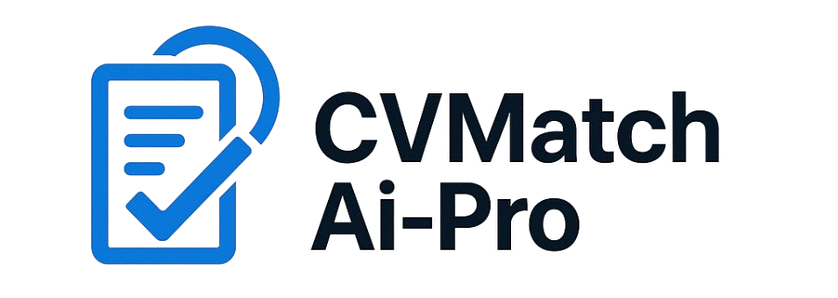From CV Reading to Predictive Matching: The New Sourcing Revolution
The way companies source talent is undergoing a seismic shift. Traditional CV reading and manual resume reviews are giving way to advanced predictive matching powered by artificial intelligence (AI). This revolution is reshaping how recruiters identify, evaluate, and engage candidates—faster, smarter, and with greater precision. Let’s explore how predictive matching is transforming talent sourcing and why it’s redefining the future of recruitment.
The Limitations of Traditional CV Screening
For decades, CV reading has been the first step in sourcing talent. However, manual resume screening has significant shortcomings that make it inadequate for today’s fast-moving, competitive talent market.
Time-Consuming and Inefficient
- Recruiters spend countless hours manually reviewing resumes, delaying hiring decisions and stretching recruitment cycles.
- High application volumes overwhelm teams, causing qualified candidates to be missed or overlooked.
- Manual screening slows down hiring, frustrating candidates and hiring managers alike.
Inconsistencies and Bias
- Subjective interpretations lead to inconsistent assessments and unfair candidate comparisons.
- Unconscious biases related to names, education, or gaps in employment can influence hiring outcomes negatively.
- Reliance on traditional methods undermines diversity, equity, and inclusion (DEI) efforts.
The Rise of Predictive Matching
Predictive matching uses AI and machine learning to match candidates to jobs based on skills, experience, potential, and cultural fit—going far beyond basic keyword searches.
How Predictive Matching Works
- AI systems analyze vast amounts of structured and unstructured data from CVs, job descriptions, assessments, and performance histories.
- Predictive algorithms identify patterns that correlate with successful job performance and long-term retention.
- Matching models rank candidates not only by qualifications but by their likelihood of excelling in the role and organization.
Advantages Over Traditional Screening
- Predictive models evaluate transferable skills, career trajectories, and learning agility—qualities often missed in manual reviews.
- AI-driven matching ensures objective, data-backed shortlists, minimizing human bias and guesswork.
- Recruiters receive prioritized lists of high-potential candidates, saving time and improving hiring outcomes.
Key Benefits of Predictive Matching for Sourcing
Organizations that adopt predictive matching see improvements in speed, quality, fairness, and overall recruitment effectiveness.
Faster Talent Identification
- AI matching reduces time spent reviewing resumes manually by automating candidate ranking based on fit.
- Shortened sourcing cycles enable recruiters to engage top talent before competitors do.
- Faster hiring decisions translate into lower vacancy costs and accelerated business growth.
Higher Quality Hires
- Predictive models surface candidates with stronger alignment to job requirements and organizational culture.
- Better matches lead to higher performance, greater job satisfaction, and reduced turnover rates.
- Hiring quality becomes a strategic driver of long-term business success.
Greater Diversity and Inclusion
- Predictive matching reduces the influence of subjective biases in early-stage screening.
- AI tools expand sourcing reach to uncover qualified talent from underrepresented backgrounds.
- Diverse, inclusive teams drive innovation, creativity, and better decision-making.
Best Practices for Implementing Predictive Matching
To maximize the impact of predictive sourcing, organizations must thoughtfully select and implement AI technologies while preserving candidate-centric values.
Choose Transparent, Ethical AI Tools
- Partner with vendors who prioritize transparency, explainability, and bias mitigation in their algorithms.
- Regularly audit predictive models for fairness, accuracy, and alignment with DEI goals.
- Ethical AI practices protect employer brand and build candidate trust.
Integrate Predictive Matching Seamlessly
- Integrate predictive tools with Applicant Tracking Systems (ATS) and Customer Relationship Management (CRM) platforms for unified workflows.
- Ensure data flows smoothly across systems to maximize insights and minimize administrative burdens.
- Seamless integration enhances recruiter adoption and overall process efficiency.
Maintain Human Oversight and Personalization
- AI tools should assist, not replace, recruiter judgment and personalized candidate engagement.
- Human interviews and interactions remain essential for cultural fit assessments and relationship-building.
- Balancing technology with humanity creates a hiring experience that candidates value and remember.
Conclusion
The shift from manual CV reading to predictive matching marks a revolutionary step forward in sourcing talent. Organizations that embrace AI-powered matching will recruit faster, fairer, and smarter—building stronger teams for a dynamic and competitive future. In this new era of sourcing, predictive intelligence isn’t just an advantage—it’s essential for success.
